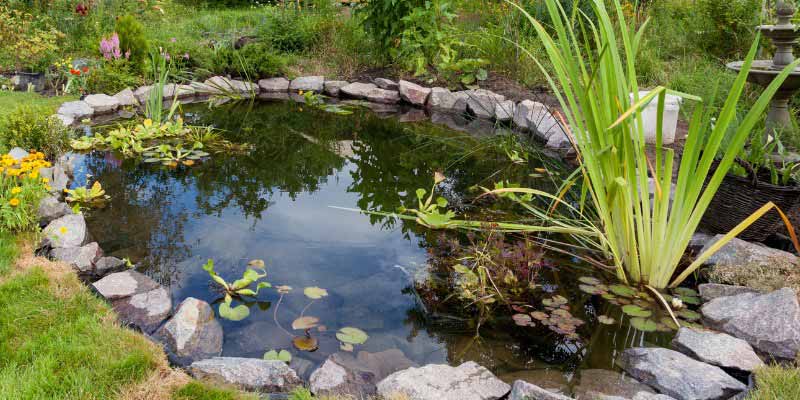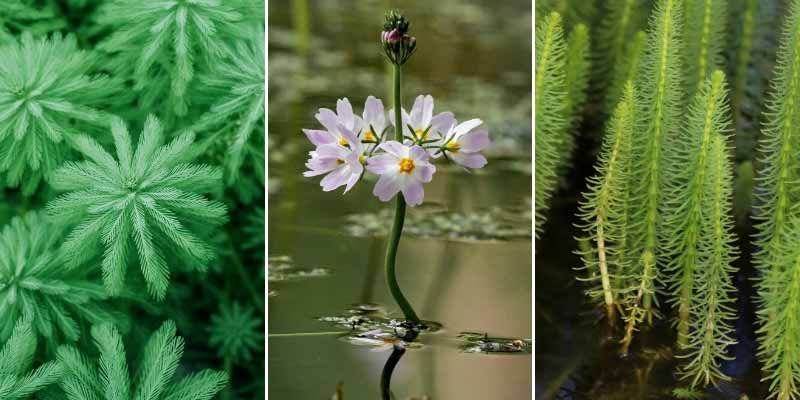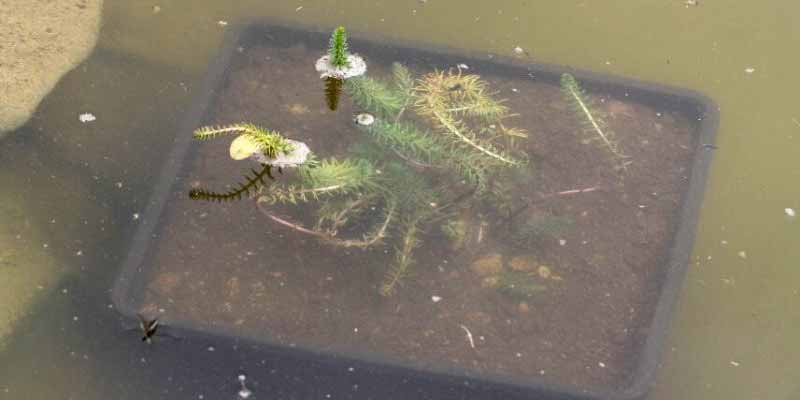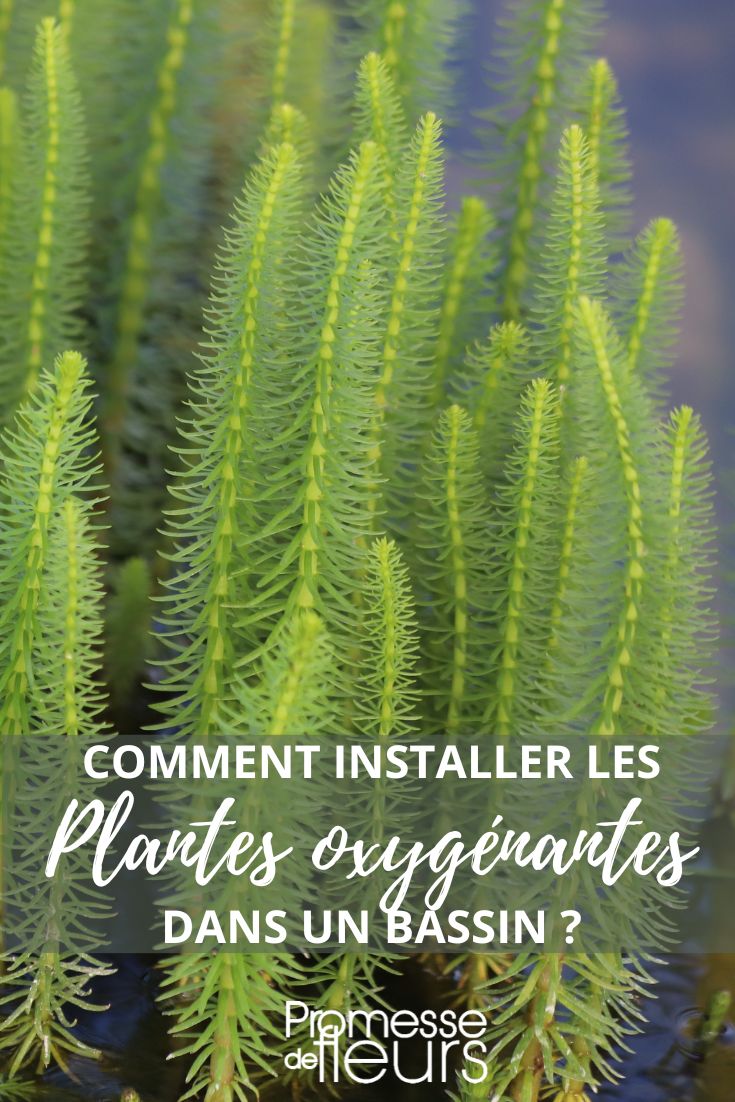The presence of a pond in the garden is a real asset both for aesthetics and for its ecological role. To plant it up, aquatic plants are the first to install, as they play an essential role in the pond's biological balance, allowing other plants and fish to thrive. In this tutorial we present oxygenating aquatic plants and our advice for successfully planting them in your pond.
Why install oxygenating plants in a pond?
Oxygenating plants are essential to maintain a pond's biological balance. Through photosynthesis they produce oxygen which they release into the water and which is necessary for survival of the pond's small fauna, as well as for bacteria. These bacteria play an important role in breaking down organic waste, converting it into mineral elements that plants can assimilate, and thus limiting silt build-up in the pond. Indeed, without them the water would quickly become cloudy and algae would develop. These plants also act as natural filters: they absorb excess nutrients such as nitrates and phosphates, which would otherwise lead to unwanted algal growth. By regulating nutrient levels, oxygenating plants help keep water clear and balanced, creating a harmonious aquatic ecosystem. Beyond their oxygenating role, these plants also provide shelter and food for the pond's small fauna.

Which plants are oxygenating?
Oxygenating plants are aquatic plants that are largely or completely submerged. Their leaves carry out photosynthesis underwater, supplying oxygen to the water (unlike emergent plants, which release oxygen at the surface, into the air).
- Myriophyllum spicatum (spiked water-milfoil) : This aquatic perennial is recognisable by its leaves cut into fine strips. It develops from a stoloniferous rootstock and sends up long, loose stems that can reach up to 3 m. These stems bear a feathery, very finely divided foliage. It is ideal for filtering and oxygenating water. Plant at 20–40 cm depth. Take care to control its spread, as it can become invasive.
- Callitriche : A plant that is mostly submerged but develops rosettes of leaves at the surface. These are evergreen in winter. Callitriche adapts well to small ponds, but can become invasive, especially in sunny positions. It prefers 30–60 cm depth.
- Ceratophyllum demersum, also called hornwort, is a submerged plant whose feathery foliage resembles that of Myriophyllum. It forms long rigid stems up to 50 cm long, bearing thread-like leaves. Ceratophyllum promotes fish breeding by providing shaded areas. It floats free without rooting and should therefore simply be placed in the water.
- Hottonia palustris (water violet): a pretty aquatic plant that naturally grows in shallow forest ponds. It has finely divided submerged leaves and produces attractive white flowers with yellow centres that emerge at the surface between May and June. It prefers shady spots and should be planted at 10–50 cm depth.
- Hippuris vulgaris (mare's-tail) develops from a horizontal rhizome and produces erect stems 20–50 cm high that emerge from the water with very fine leaves. It is an excellent oxygenating plant that also provides shelter for insects, fish and tadpoles. Plant in shallow zones at 5–30 cm depth.
- Potamogeton (pondweed): this aquatic perennial forms cylindrical stems bearing lanceolate submerged leaves and oval floating leaves. It flowers in summer with compact spikes. Plant Potamogeton at 20 cm to 1 m depth.
To learn more, see our advice sheet: “8 oxygenating aquatic plants for ponds or pools”.

When to install them?
Ideal time to install oxygenating plants is spring, around May, as this season marks the start of the growth period, offering ideal conditions for rooting and initial development. Milder temperatures favour successful establishment, preparing plants to play their crucial role in the pond's biological balance.
However, they can be installed throughout the growing season, from May to October. Avoid frosty periods or extreme heat.
How to install them?
An important factor is the depth at which these plants are installed: some, like Myriophyllum, prefer shallow water and are planted near the pond edge, while those that like greater depth are placed towards the centre. They are usually installed in perforated baskets, although border plants can also be planted directly in soil. Finally, there are free‑floating oxygenators, not rooted, such as Ceratophyllum demersum, which should simply be placed in the water.
For perforated baskets, plan one basket per plant. It should be large enough to allow the plant to develop, as dividing and repotting later will be tricky. Use aquatic plant compost or make your own substrate by mixing two thirds heavy clay soil, one third compost and a little coarse sand.
- Take a perforated basket and line the bottom and sides with hessian. This allows water to pass while retaining the substrate.
- Fill it with aquatic plant compost
- Place the plant in the centre of the basket.
- Add a little compost, but avoid burying the collar.
- Cover the substrate surface with gravel or lava grit (at least 2–3 cm thick). This prevents substrate from dispersing into the water and stops fish from rooting in the substrate and exposing the plant.
- Water generously. This prevents fine particles from rising to the surface.
- Carefully immerse the basket in the pond, then position it in the chosen spot.

Required equipment
- A perforated basket
- Aquatic plant compost: aquatic compost
- Gravel or lava grit
- Watering can
- Hessian
































Comments